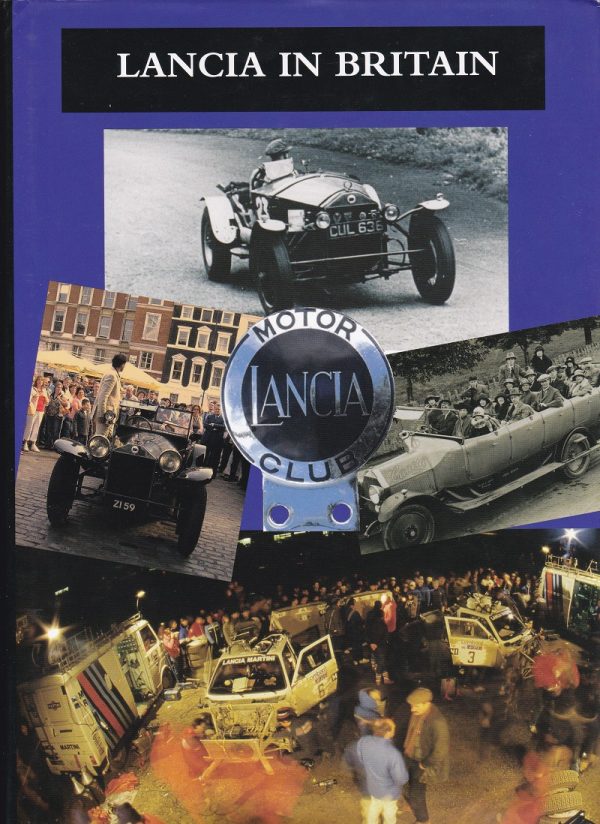
by the Lancia Motor Club (edited by Jack Romano)
2022 review by James Loveridge
I guess all of us come across books we have never heard of but which turn out to be of interest. One such is “Lancia in Britain”. This was published in 2013 and was produced by the Lancia Motor Club. No author is credited and it was edited by Jack Romano. It is a hardback, printed by the Oxford University Press to a very high standard, as is to be expected from such a printer, well illustrated and with a very professional dust cover. It has no ISBN number nor is a price quoted so quite clearly, with its mass of material about the club and its history since 1947, it was intended for members of the Club. A member of the Club, Mr. Ted Bates, left a legacy which funded the production of the book and that legacy was well spent.
What makes this book of interest to those who are not members nor particularly interested in Lancia vehicles per se is the wealth of information it gives about the Lancia company’s early days, about Vincenzo Lancia himself, a very successful racing driver, and about the development of what always were technically advanced and innovative vehicles. Apparently Lancia lodged some 800 patents internationally, reflecting the continued development and improvements to their product.
The focus is, as the title suggests, on Lancia in Britain and, amidst the stories of the club, its activities and its characters is the story how Lancia set about promoting sales of its vehicles in a very competitive market. Key to establishing these advanced and always expensive vehicles in Britain was Walter Leonard Stewart who in 1907 recognised the special features of the Lancia and persuaded Vincenzo Lancia to let him take over the selling of Lancias in Britain. The strength of the business Stewart set up with the full support of Mr Lancia was that it was a full service operation ensuring the complete satisfaction of the buyer. Only the likes of Rolls-Royce were prepared to offer comparably support. The various other people and companies involved in selling Lancias over the period up to 2013, with their numerous ups and downs, are recorded.
Lancia was never a major manufacturer; it had the misfortune of having Fiat, for whom Lancia once worked, just down the street in Turin, but it did have a niche market. Both the parent company and Mr Stewart worked very hard to identify those who constituted that market and to make sure they, once identified, remained loyal. From the outset that customer base was made up of the more sophisticated, and well heeled, motorist who appreciated the quality of these rather unconventional cars, particularly their performance, road holding and excellent ride characteristics. Sidelights are also shone on Lancia’s commercial vehicles and on its involvement in both World Wars.
The Rust Scandal, as the book calls it, of the late 1970s which seriously damaged the Lancia reputation is fully dealt with, defensively as you would imagine. A lot of the blame is put on Esther Rantzen (before she was made a Dame) and her “That’s Life” programme.
This book skilfully blends the story of a Motor Cub, at times positively disliked by the people actually selling the vehicles, and a brief history of a very significant make of car. Much of it is contributions by members and these, actually, make interesting and amusing reading. To fully understand the somewhat complex history of the various Lancia models a copy of Auto Review’s “Lancia Album” number 101 would be very useful.
Of course several clubs have issued books about themselves, notably the Vintage Sports Car Club, the British Racing Drivers Club and the Royal Automobile Club, but I am not aware of a one-make club going as far as the Lancia Motor Club has done and done so well.
Amazon doesn’t have any copies but it seems they are available if you look for them at around £60.00, and they are still available from the Lancia Motor Club directly.
Disclaimer: although not a member of the Lancia Motor Club the author of this piece does own a 1963 Appia, described in the book as the most expensive small car of its time. With its 1090cc V-four engine, sliding pillar front suspension and frameless body it really is a quite outstanding little car.







Leave a Comment